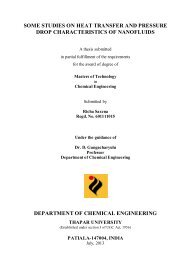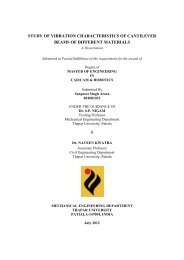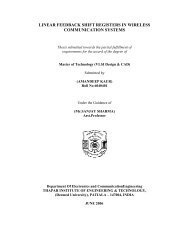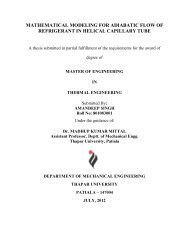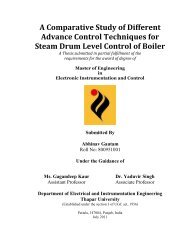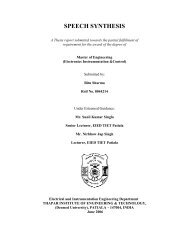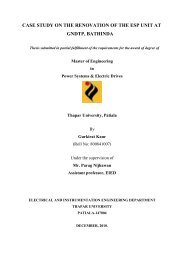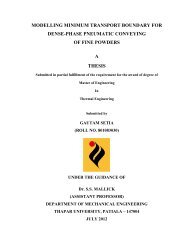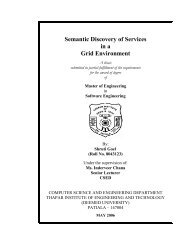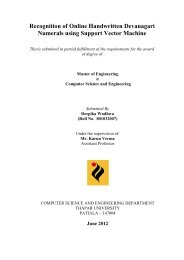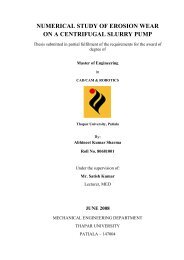from indigenous fermented foods and human gut ... - Thapar University
from indigenous fermented foods and human gut ... - Thapar University
from indigenous fermented foods and human gut ... - Thapar University
Create successful ePaper yourself
Turn your PDF publications into a flip-book with our unique Google optimized e-Paper software.
Table 3.1 Isolation of Lactobacillus <strong>from</strong> different sources<br />
51<br />
Chapter III Material <strong>and</strong> methods<br />
S. No. Source name Number of<br />
samples examined<br />
1 Mango pickle 100<br />
2 Garlic–chilli pickle 100<br />
3 Chilli pickle 100<br />
4 Fermented rice (Bhaati jaanr) 50<br />
5 Fermented mustard (Kharoli) 50<br />
6 New born babies meconium 36<br />
Total samples 436<br />
3.3.4 Carbohydrate Fermentations<br />
Isolates were characterized according to their fermentation ability to ferment eight<br />
different carbohydrates. All reactions were performed by using 96-well microtitre plates<br />
containing fermentation medium with different sugars, namely Glucose, Sorbitol, Mannitol,<br />
Lactose, Maltose, Mannose, Galactose <strong>and</strong> Arabinose. Active cells <strong>and</strong> sugar solutions were<br />
prepared separately. For preparation of active cells; isolates were activated in 10 ml MRS<br />
medium <strong>and</strong> incubated at 37°C for 24 h followed by centrifugation for 10 min at 10,000 rpm.<br />
Pellets obtained were washed twice with saline <strong>and</strong> resuspended in MRS broth without<br />
glucose, containing pH indicator bromothymol blue (0.01 g/l). The sugar solutions were<br />
prepared at a final concentration of 10% (w/v) after filter sterilization with sterile 0.22 µm<br />
membrane filters (Millipore TM , India).<br />
After preparative steps, following procedure was applied: 40 μl of sugar solutions<br />
were pipetted into each well followed with addition of 160 μl of suspended cells, giving the<br />
final sugar concentration of 2%. All the reactions were performed in triplicates. Positive <strong>and</strong><br />
negative controls were used to indicate any contamination. Suspended cells (160 μl) <strong>and</strong><br />
glucose (40 μl) solution were used as positive control while suspended cells (200 μl) alone<br />
were used as negative control. After overnight incubation at 37°C, the turbidity <strong>and</strong> the color



